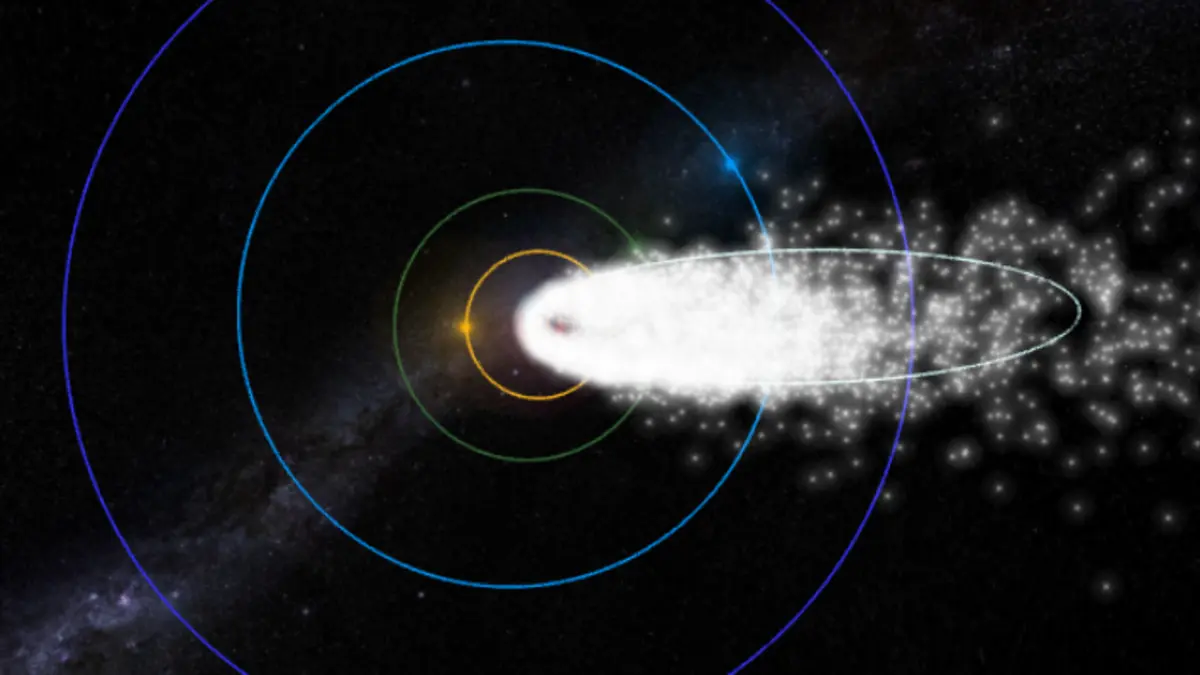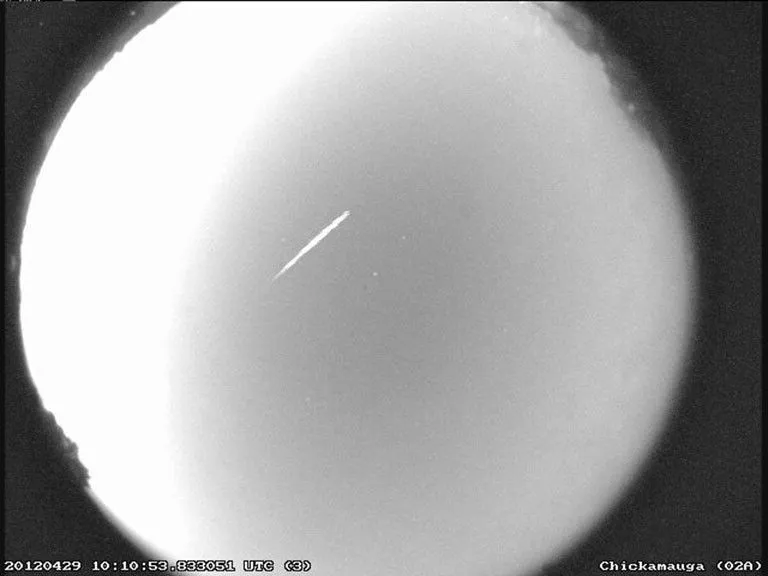Eta Aquariid meteor shower peaks May 5–6, 2025
The Eta Aquariid meteor shower, caused by debris from Halley’s Comet, peaks on May 5–6, 2025. Observers in the Southern Hemisphere may see up to 50 meteors per hour under dark skies before dawn, while those in mid-northern latitudes may observe 10–20 meteors per hour.

Eta Aquariids meteor shower simulation. Image credit: American Meteor Society
The Eta Aquariid meteor shower, active from April 19 to May 28, reaches its peak on May 5–6. As Earth moves through the debris trail of Halley’s Comet (1P/Halley), meteors enter the atmosphere at 65 km/s (40 miles per second), often leaving glowing trains of incandescent debris visible for several seconds to minutes.
The radiant of the shower, near the star Eta Aquariid in the constellation Aquarius, rises in the early morning and reaches its highest point before dawn. On May 6, a waxing gibbous moon (64% full) will set several hours before sunrise, creating favorable viewing conditions. Viewing between 02:00 local time (LT) and dawn is optimal for peak activity.
Under dark skies and favorable weather, observers in the Southern Hemisphere, particularly in regions such as Australia and South America, may observe up to 50 meteors per hour.
In mid-northern latitudes, including areas like the southern United States and India, rates may range from 10–20 meteors per hour. Fewer meteors are visible in higher northern latitudes, such as Canada, due to the radiant’s low altitude.

The Northern Hemisphere may witness Earthgrazers, which are long meteors that appear to skim the horizon due to the radiant’s low altitude. In the Southern Hemisphere, the radiant is higher in the sky, leading to increased meteor visibility. The constellation Aquarius, specifically the Water Jar asterism, helps locate the radiant.
Observers are advised to view from a dark location, away from artificial light, with an unobstructed horizon. Lying on one’s back with feet facing east is recommended, using a blanket or reclining chair for comfort. Allow 30 minutes for eyes to adapt to the darkness, and avoid bright lights such as mobile phones.
NASA recommends scanning a wide area of the sky and avoiding the moon’s position, even if it has already set, as meteors can appear in any direction. Telescopes or binoculars are not required; the naked eye is most effective. Meteor activity may be sporadic, but viewing continues until dawn.
The Eta Aquariids are one of two annual meteor showers produced by debris from Halley’s Comet, the other being the Orionids in October. Halley’s Comet, last observed in 1986, measures approximately 16 × 8 × 8 km (10 × 5 × 5 miles) and has an albedo of 0.03. It follows a retrograde orbit and completes one revolution around the Sun approximately every 76 years. Its next perihelion will occur in 2061.
Halley’s Comet, identified by Edmund Halley in 1705, ejects material during each orbit, forming debris streams responsible for the Eta Aquariids. The radiant coincidentally aligns with Eta Aquarii, a star located approximately 170 light-years away. Meteors typically disintegrate at altitudes around 100 km (60 miles) above Earth’s surface. The constellation Aquarius serves solely as a reference point for locating the radiant.

After the Eta Aquariids, the Southern delta Aquariids and alpha Capricornids will peak on July 29–30, 2025. The Southern delta Aquariids, with a zenithal hourly rate (ZHR) of 25, are visible from southern tropical regions and produce faint meteors without persistent trains. The alpha Capricornids have a ZHR of 5 and are known for bright fireballs, visible in both hemispheres.
The Perseids will peak on August 12–13, 2025, with a ZHR of 100, though visibility may be reduced by an 84% full moon. The Orionids, peaking on October 22–23, will have a ZHR of 20 and benefit from a 2% full moon. Other major showers include the Geminids on December 13–14 (ZHR 150), and the Quadrantids on January 3–4, 2026 (ZHR 120), though the Quadrantids will coincide with a full moon.
Reet is a science journalist and researcher with a keen focus on extreme weather, space phenomena, and climate-related issues. With a strong foundation in astronomy and a history of environmental activism, she approaches every story with a sharp scientific lens and a deep sense of purpose. Driven by a lifelong love for writing, and a curiosity about the universe, Reet brings urgency and insight to some of the most important scientific developments of our time.



Commenting rules and guidelines
We value the thoughts and opinions of our readers and welcome healthy discussions on our website. In order to maintain a respectful and positive community, we ask that all commenters follow these rules.